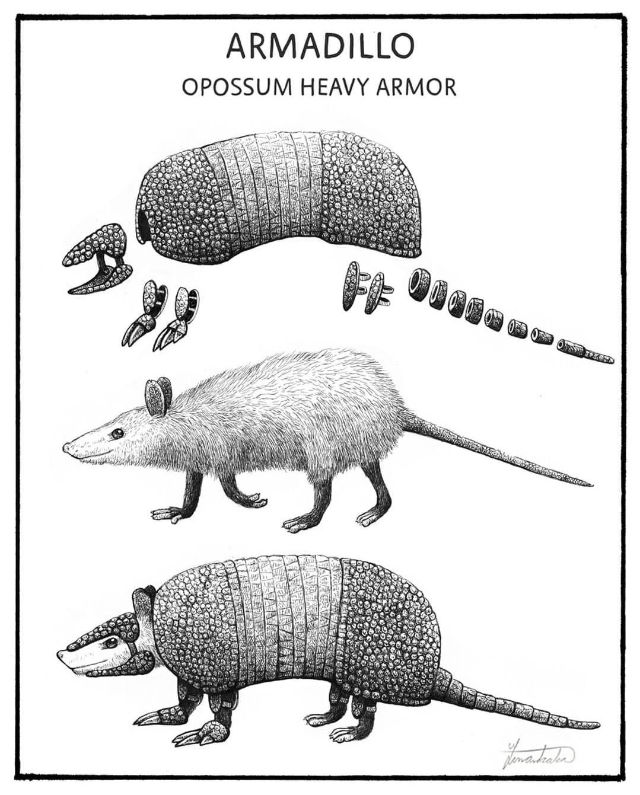Howdy, y’all! Today is November 6th, a day in which we’re called to observe some significant…uh…observances. It’s not only National Cash Back Day (just don’t expect to get any pennies), but also National Men Make Dinner Day.
If that latter deal strikes fear into your heart, whether you’re on the cooking or consuming end of things, never fear…it’s also National Nachos Day, and you can’t go wrong with a paper plate full of Julio’s engulfed in shredded cheese and tossed into a microwave oven for 72 seconds. If you’re really fancy, throw a few jalapeño slices on top (it’s your call as to whether you nuke them or not). Voilà! You’ve got both bases covered, amigos.
We’ve got a veritable smörgåsbord of bloggerly delicacies for your enjoyment (and now I’m hungry) so let’s dive in, shall we?
Historical Props to the Rattlesnake
According to this 2016 study, about half of the population feels “anxious” about snakes, and about 3% have a clinical phobia related to snakes. I have no basis to dispute those numbers, and that’s why I have for the past few years posted a warning on any articles I write that include photos of snakes, in case any of you fall into the latter category.
While I in absolutely no way will attempt to argue that those feelings are illogical or inappropriate, I do want to share something I ran across a few months ago showing how the rattlesnake was used as a symbol of defiance in the years leading up to the American Revolution and then throughout that momentous period of our country’s history.

I invite you to take a look at this article, entitled The Rattlesnake Tells The Story, on the All Things Liberty website. It provides a account of how the imagery shown on the masthead pictured above became a symbol of the American colonies’ defiance of English rule, beginning with a satirical article by Benjamin Franklin in 1751. (And, by the way, the article contains no photos of actual rattlesnakes.)
The rattlesnake appeared in multiple forms and on varied media (even on some currency). And, eventually, even the British adopted the serpent to portray what they deemed to be American menace and vengefulness.
I started to write that regardless of how you feel about snakes IRL, this historical usage is pretty cool, but in reality, it might actually serve to reinforce one’s negative emotions about them. I mean, if the symbol intimidated the British Empire, maybe there’s something to its power.
Here’s one additional reference to the significance of the “Rattle-Snake,” also attribued to Benjamin Franklin, wherein he describes the characteristics of the animal and makes a case for including it in a crest representing the united colonies (this was published before the Declaration of Independence). It’s a pretty darn good application of anatomical and behavioral features for political purposes.
OK, enough about sneks; let’s talk music.
Vulfpeck: It really is all about that bass…
Being the OWG that I am, I only recently learned about Vulfpeck via a chance encounter on Facebook. [If the band’s website is a bit short on edifying content, its Wikipedia page will fill in the blanks.]
Vulfpeck is an American band comprised of four core members and a rotating cast of contributing musicians. Their music doesn’t cleanly slot into a single genre, but instead has elements of funk, soul, R&B, and jazz. Regardless of genre, they have fun with it. Here’s proof:
They’re all supremely talented, but it was the bass player, Joe Dart, that set the hook as I was casting about for new music on YouTube. He’s featured on one of the band’s most requested tunes, Dean Town. Here are a couple of different live performances of the song that showcase Dart’s talents. The first one, from a concert at Madison Square Garden, starts out with a collaboration between Dart and the audience, the latter obviously being way more familiar with Vulfpeck than I’ll ever be (it takes more than a minute before Dart outpaces the audience).
The next performance was recorded at a session of Live From Here and features Chris Thile playing a Gibson F-5 mandolin costing $20K. Thile, a multi-instrumentalist, composer, and radio personality, took over hosting A Prairie Home Companion after Garrison Keillor retired; the show was eventually renamed Live From Here. The fact that he is not a member of Vulfpeck and basically jammed his part in this perfomance on short notice proves that divine beings of musicality walk amongst us.
Also, Joe Dart appears to be playing a bass made out of plywood. It’s probably not, though.
LBJ’s Boat
A few weeks ago Debbie and I attended the annual Wooden Boat show at the Horseshoe Bay Resort Marina. This was the third or fourth time we’ve gone to the marina to see the beautiful old boats on display; we’re always impressed by the artistry and workmanship.
The number of boats on display this year was fewer than in past years but one in particular attracted our interest…and it wasn’t even made of wood. Rather, it was exceptional because of its owner: President Lyndon Baines Johnson.

We wouldn’t have known the provenance of this fiberglass-hulled boat without some education by a woman who had a wooden boat in the show and who was quite eager to fill in the considerable gaps in our knowledge. While she didn’t know the exact year that the boat was constructed (by the historic builder, Chris-Craft), she related how LBJ requested that it be capable of speeds faster than the boats manned by the Secret Service. That story may be apocryphal, but it has the ring of truth when considered within the context of Johnson’s personality and proclivities.

I mentioned Chris-Craft above. Almost all of the wooden boats on display came out of that shop, and the workmanship is superb. The company no longer makes boats with wooden hulls, but it does incorporate wooden accents into its designs. The aftermarket for antique wooden boats appears to be robust, with prices going past six figures.
We did learn from our impromptu maritime docent that wooden boats pose some unique maintenance challenges, but they are also suprisingly resilient. The transition to fiberglass hulls solved those issues, although one might argue that it also lessened the beauty of the boats. That’s a subjective topic.
We left the boat show a little more knowledgeable, and perhaps we will have some influence on future shows as we suggested that the show’s organizers provide signage in the future to explain more about each vessel. That’s a common and much appreciated thing that car shows do, and it’s probably even more important for these boats, as most of us don’t have much opportunity to see them or interact with their owners.
In an interesting coincidence, I mentioned to someone in our Sunday School class about seeing LBJ’s boat, and they informed me that another member of the class who spent his childhood around Lake LBJ (it was actually called Granite Shoals in the early days, and renamed in 1965) had the privilege of skiing behind the boat, not once but on multiple occasions. In another possibly apocryphal twist, I was told that the individual skier in question was actually personally invited by LBJ on those occasions. I need to further explore the details of that juicy claim.
Quick Shots
- 1,041 square feet of creepiness — No, I’m not referring to the Lizzie Borden House, which is now a B&B, but rather what’s claimed to be the largest spider web in the world, and features 110,000 arachnids. Never mind the dubious accuracy of both of those claims…this is the stuff of nightmares. I’ll take 110,000 rattlesnakes over 1 spider any day of the week.
- Even more insect-related horror — From the same publication comes this report of a father-son duo that was stung to death by Asian hornets while zip-lining in Laos. I can think of many reasons not to travel to Laos, but I didn’t have this one on my bingo card.
- The curse of recursion — Large Language Models, or LLMs, (think ChatGPT, et al.) are being trained in overwhelming large part by scraping content from the entire Internet, except where prohibited by law or legal agreements. Most of that content is, for better or worse, human-generated. But what happens when the LLMs start to contribute their own content which will be further scraped by other LLMs, and that content will be added to the inventory, to be scraped…well, you get the picture. And what happens is called model collapse, and it has dire implications for the usefulness of future generations of those models. This study examines the issue in detail, but, unfortunately, raises more questions than it answers. (And don’t get me started on the problem of data poisoning, which has nothing to do with a certain android in Star Trek).
- Deprecated Term of the Day Which Should Be Used More Often — Yellow Journalism and Yellow Press. Read about it and tell me I’m wrong. Also, “Fake News” just doesn’t have the same ring.
Closing Shots: Critter mashups that we all need


Discover more from The Fire Ant Gazette
Subscribe to get the latest posts sent to your email.


Proud(?) 3%r here.
Or. Well..I guess I shouldn’t be proud of it. But I do appreciate the snake warnings. I have always even hated the historical usages. Because snake.